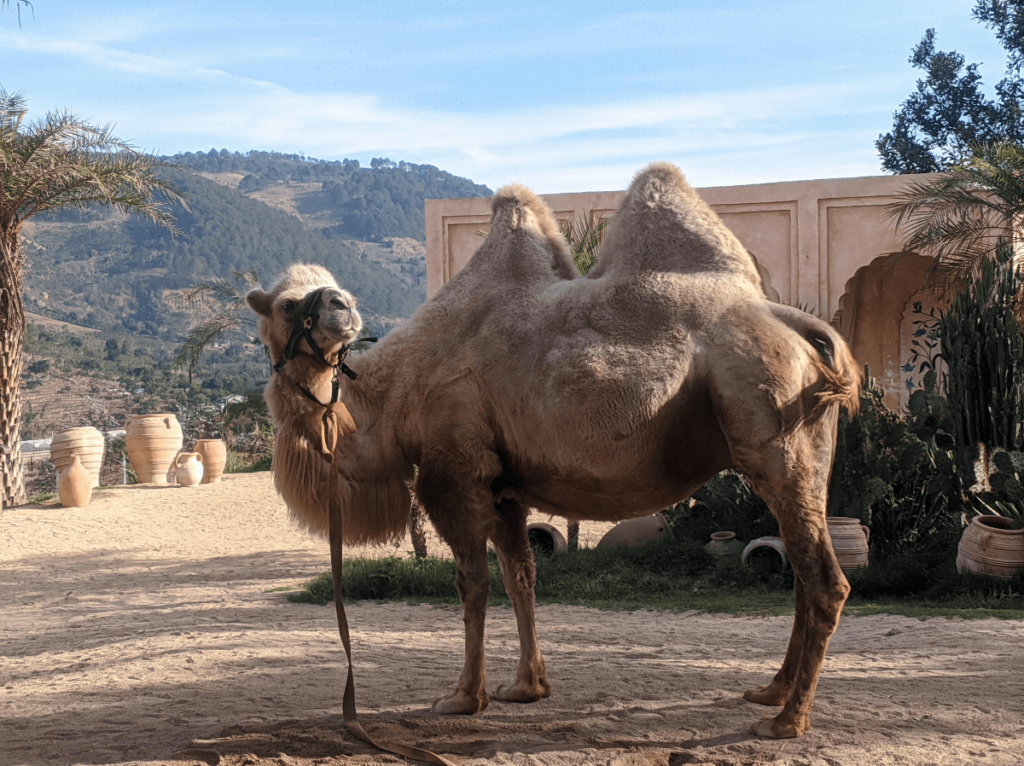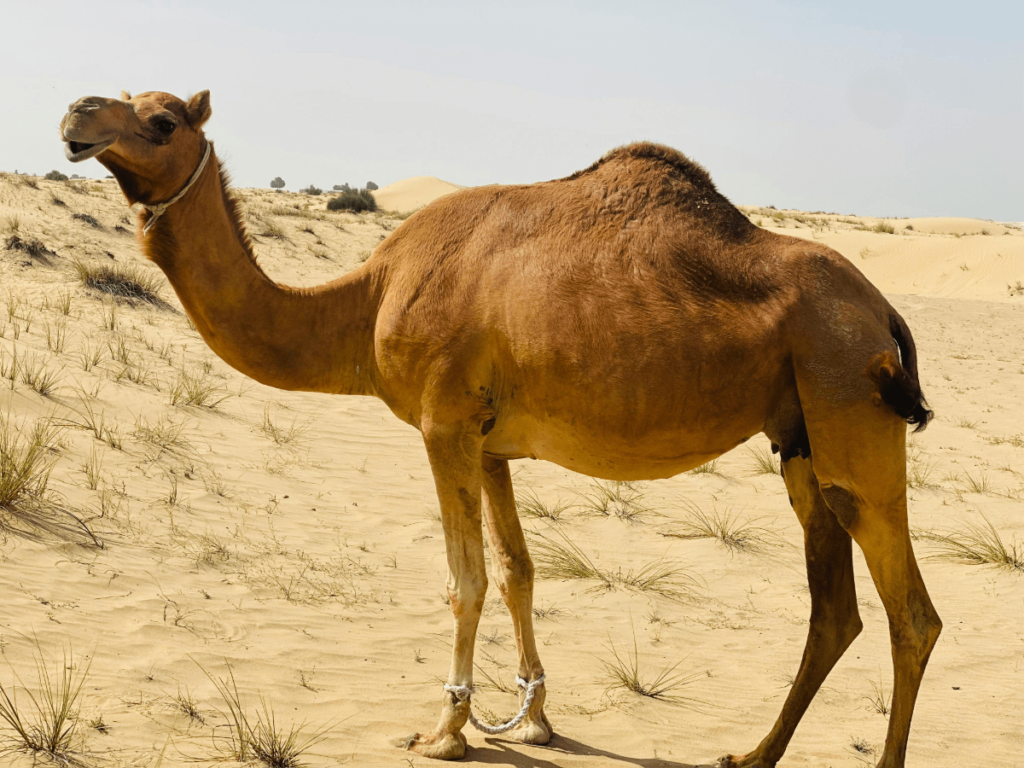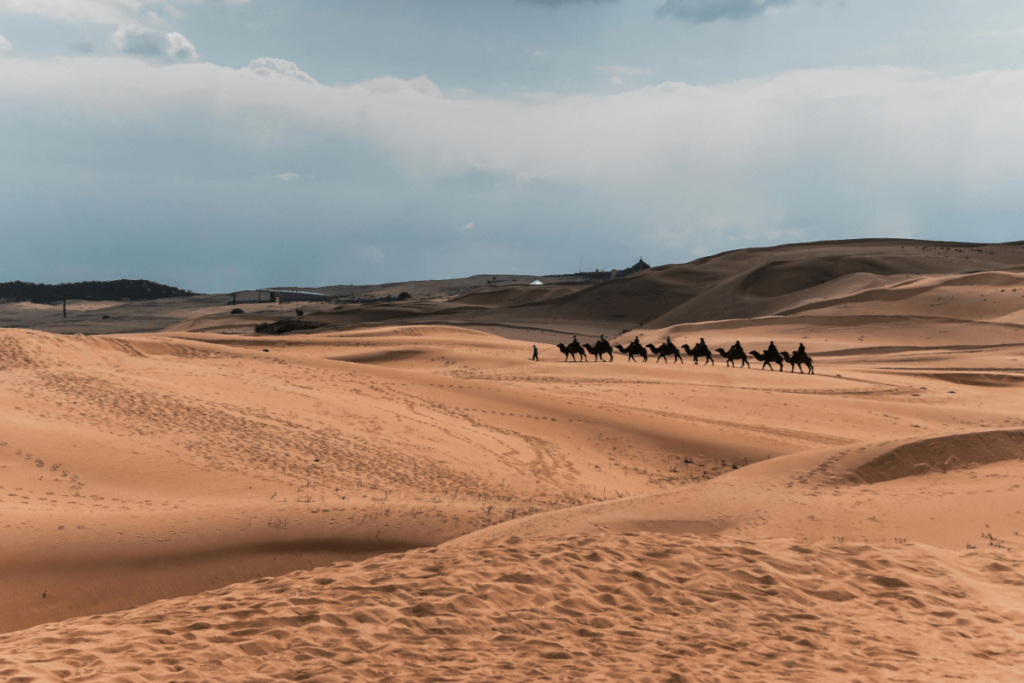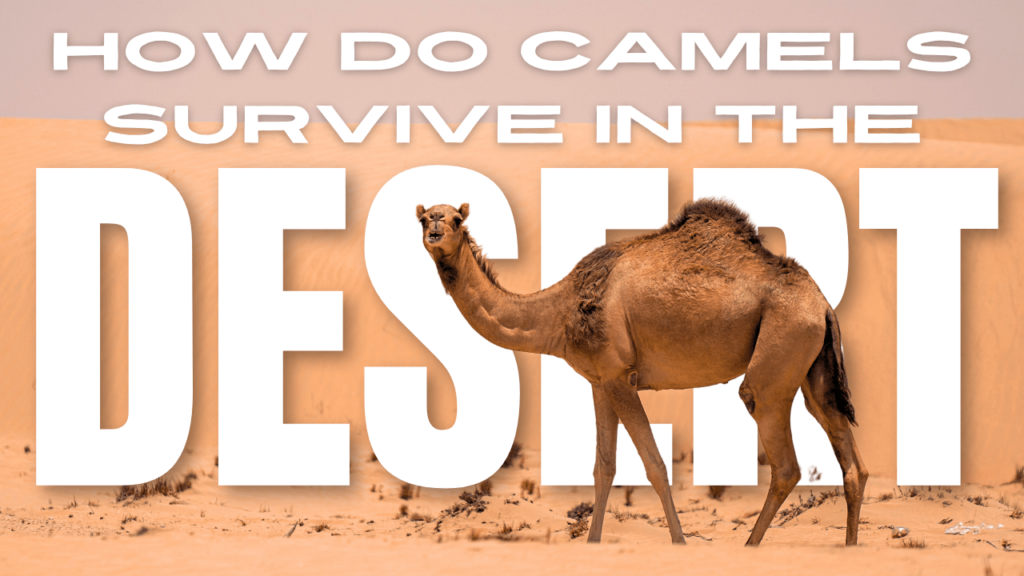Camels, often referred to as the “ships of the desert,” are remarkable creatures that have evolved to withstand some of the harshest conditions on Earth. Their ability to thrive in such an environment raises the question: how do camels survive in the desert? In this comprehensive article, we’ll explore the various adaptations that allow these fascinating animals to not only survive but thrive in the extreme conditions of the desert.
How Do Camels Survive in the Desert:
One of the most fascinating aspects of desert wildlife is how do camels survive in the desert, with their remarkable physiological and behavioral traits
Camel Facts Sheet:
| Camel Facts Sheet | Details |
|---|---|
| COMMON NAME | Dromedary (one-humped) and Bactrian (two-humped) Camels |
| SCIENTIFIC NAME | Camelus dromedarius (Dromedary) Camelus bactrianus (Bactrian) |
| TYPE | Mammal |
| DIET | Herbivore (primarily grasses, grains, and desert plants) |
| AVERAGE LIFE SPAN IN THE WILD | 40 to 50 years |
| SIZE | Dromedary: 7 feet (2.1 meters) tall at the hump Bactrian: 6 feet (1.8 meters) tall at the hump |
| WEIGHT | Dromedary: 880 to 1,320 pounds (400 to 600 kilograms) Bactrian: 990 to 1,540 pounds (450 to 700 kilograms) |
| SIZE RELATIVE TO A 6-FT HUMAN | Dromedary: Significantly taller at the hump Bactrian: Slightly taller at the hump |
1. The Secret of the Hump: Energy Storage for Survival

One of the most iconic features of a desert camel is its hump, often misunderstood as a water storage device. The primary function of the hump is to store fat, which is crucial for the camel’s survival in the desert. When food is scarce, camels metabolize the fat in their humps into energy and water, enabling them to survive for extended periods without eating. This adaptation is vital for long desert journeys where food is not easily accessible.
- Fun Fact: A camel’s hump can weigh up to 80 pounds (36 kg) when fully loaded with fat. As the fat is used up, the hump can shrink, even leaning to one side until the camel can replenish it with food.
2. Mastering Water Conservation: The Ultimate Hydration Strategy

A key question in understanding how do camels survive in the desert is how they manage water consumption. Camels are renowned for their ability to go long periods without water, a skill that is essential in the arid desert environment:
- Efficient Hydration: When camels do find water, they drink vast amounts—up to 40 gallons (150 liters) at a time. Their bodies can store this water and use it efficiently, allowing them to go without drinking for up to 10 days under normal conditions and even longer when necessary.
- Specialized Kidneys and Intestines: The desert camel’s kidneys are highly efficient at conserving water, producing urine that is far more concentrated than that of other mammals. Their intestines are also adapted to absorb every possible drop of water from their food, resulting in extremely dry feces.
- Temperature Regulation: Camels can tolerate a rise in body temperature of up to 6°F (3°C) during the day, reducing the need for sweating and thus conserving water. This ability to manage body heat is crucial in preventing water loss through perspiration.
How Long Can a Camel Survive Without Water?
One of the most frequently asked questions about camels is, how long can a camel survive without water? Under ideal conditions, a healthy camel can survive up to two weeks without water. However, this duration can vary depending on the environmental conditions, the camel’s health, and its activity level. In extreme conditions, such as during a sandstorm or while carrying heavy loads, this time frame may be shorter.
3. Desert-Ready Feet: Designed for the Sands

The next aspect of how do camels survive in the desert lies in their unique feet, which are perfectly adapted for traversing sandy terrain. The broad, padded feet of a camel prevent it from sinking into the soft sand, allowing for efficient movement across the desert:
- Large, Flat Feet: The desert camel’s feet are wide and flat, with two toes on each foot connected by a flexible pad. This design helps distribute the camel’s weight evenly, preventing it from sinking into the sand.
- Real-Life Example: Imagine walking on a sandy beach in flip-flops versus walking barefoot. A camel’s broad feet are like walking barefoot on sand, providing stability and preventing it from getting stuck.
4. Natural Eye Protection: Shielding Against the Elements

Desert environments are notorious for their harsh sunlight and frequent sandstorms. So, how can a camel survive in the desert with such challenging conditions? Their eyes are equipped with several protective features:
- Thick Eyelashes and Bushy Eyebrows: Camels have long, thick eyelashes that help keep sand out of their eyes. Their bushy eyebrows provide additional protection by shading their eyes from the intense desert sun.
- Sealable Nostrils: In addition to their eye protection, camels have the ability to close their nostrils tightly, preventing sand from entering during sandstorms while still allowing them to breathe.
5. The Camel’s Amazing Digestive System: Extracting Every Nutrient

Understanding how do camels adapt to the desert also involves examining their diet and digestive system. Camels are herbivores, primarily feeding on tough, dry desert vegetation that other animals might find indigestible. Their digestive system is highly specialized to extract maximum nutrients from such food:
- Three-Chambered Stomach: Unlike most ruminants that have a four-chambered stomach, camels have a three-chambered stomach. This allows them to efficiently break down tough, fibrous plant material, extracting every possible nutrient.
- Efficient Water Extraction: The camel’s digestive system also plays a role in water conservation. As they process their food, camels extract and absorb every bit of moisture, ensuring that no water is wasted.
What Do Camels Eat in the Desert?
In answering how do camels survive in the desert, it’s essential to consider their diet. Camels eat a variety of desert plants, including thorny bushes, dry grasses, and even plants with high salt content. Their tough mouths allow them to consume these plants without injury, and their ability to eat salty plants helps them in areas where freshwater is scarce.
6. Adapting to Extreme Temperatures: Surviving the Heat and Cold

Another crucial aspect of how do camels survive in the desert is their ability to adapt to extreme temperature fluctuations. The desert is known for its scorching daytime heat and freezing nighttime temperatures. Camels have developed several strategies to cope with these extremes:
- Thermal Regulation: Camels can endure body temperature fluctuations, allowing them to survive the intense heat of the day without needing to sweat excessively, which would cause water loss.
- Behavioral Adaptations: Camels tend to rest during the hottest parts of the day and become more active during the cooler morning and evening hours. Their thick fur provides insulation against the cold desert nights while reflecting sunlight during the day.
Why Are Camels Called the Ship of the Desert?
Camels have earned the title “ship of the desert” due to their ability to carry heavy loads across vast stretches of desert, much like a ship carries cargo across the sea. Their endurance, strength, and ability to survive in such a harsh environment make them invaluable to the people living in desert regions. Historically, camels have been used for transportation, trade, and even warfare, further solidifying their reputation as the “ships of the desert.”
7. Camels and Human History: A Partnership in Survival

Throughout history, camels have played an essential role in human survival, particularly in desert regions. They have been domesticated for thousands of years, serving as pack animals, sources of food, and symbols of wealth and status:
- Transportation: Camels have been used for centuries to carry goods across deserts, enabling trade routes like the Silk Road. Their ability to travel long distances without water made them indispensable to traders.
- Cultural Significance: In many cultures, camels are symbols of wealth and are often associated with luxury. They have also been used in warfare, with camel cavalry being a significant force in various ancient armies.
- Food and Resources: Camel milk is a staple in many desert communities, providing essential nutrients. Camel meat is also consumed, and their hides are used to make leather goods.
8. Camels in Modern Times: Adaptation and Conservation

In modern times, camels continue to be vital to the livelihoods of many desert-dwelling people. However, they face new challenges, including habitat loss and climate change:
- Conservation Efforts: In some regions, wild camel populations are threatened by habitat destruction and hunting. Conservation programs aim to protect these populations and preserve their natural habitats.
- Adaptation to Climate Change: As climate change alters desert ecosystems, camels’ adaptive abilities may be tested. Understanding and supporting these animals in the face of environmental changes is crucial to their survival.
Conclusion: The Resilient Survivors of the Desert
how do camels live in the desert? Through a combination of physical adaptations, behavioral strategies, and evolutionary traits, camels have mastered the art of desert survival. From their fat-storing humps to their water-conserving kidneys and unique feet, every aspect of a camel’s physiology is designed to help them thrive in one of the most challenging environments on Earth. These adaptations not only ensure their survival but also highlight the remarkable ways in which life can evolve to meet the challenges of the environment.
To support the conservation of critically endangered camels and learn more about ongoing efforts to save them, visit Wild Camels.
As we continue to study and understand how camels survive in the desert, we gain a deeper appreciation for these incredible creatures and the intricate balance of nature that allows them to endure where few others can. Protecting and preserving these magnificent animals is essential to ensuring that they continue to grace our deserts for generations to come.
For more exciting wildlife content and updates, visit our homepage PrimalWildlife




